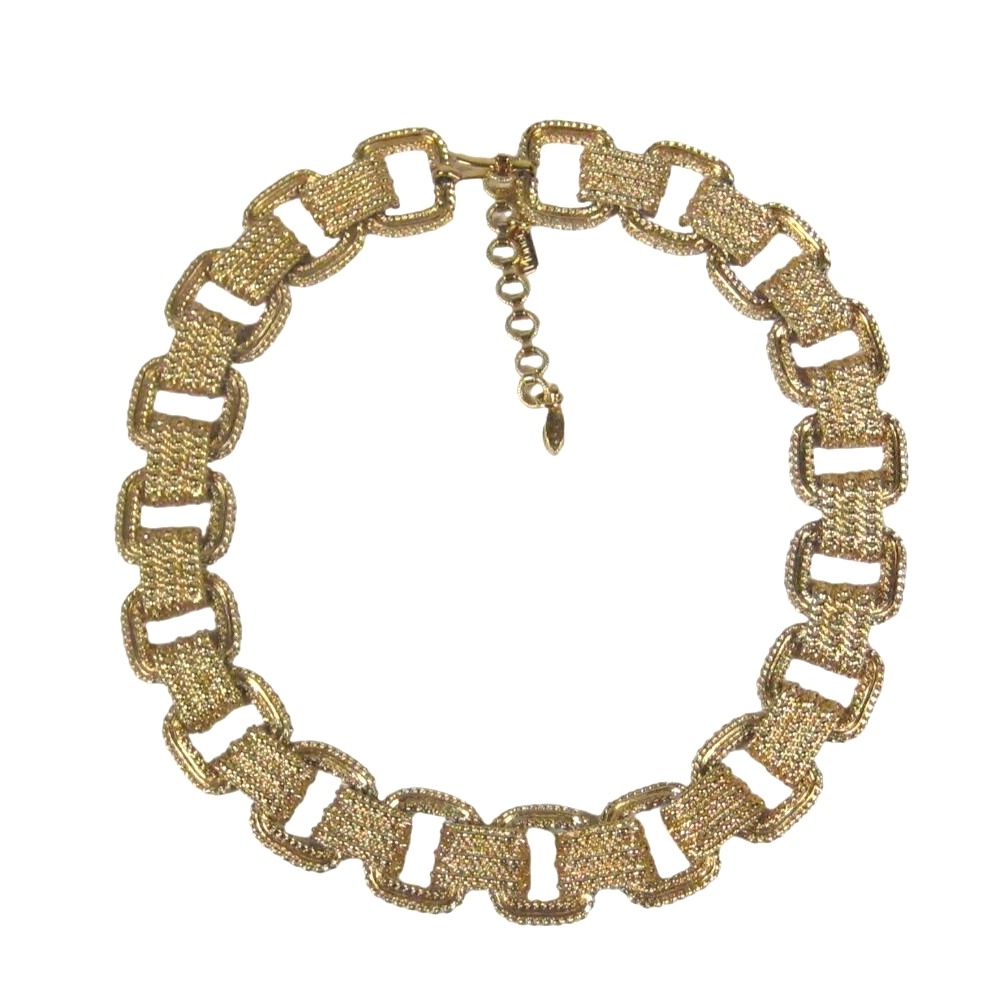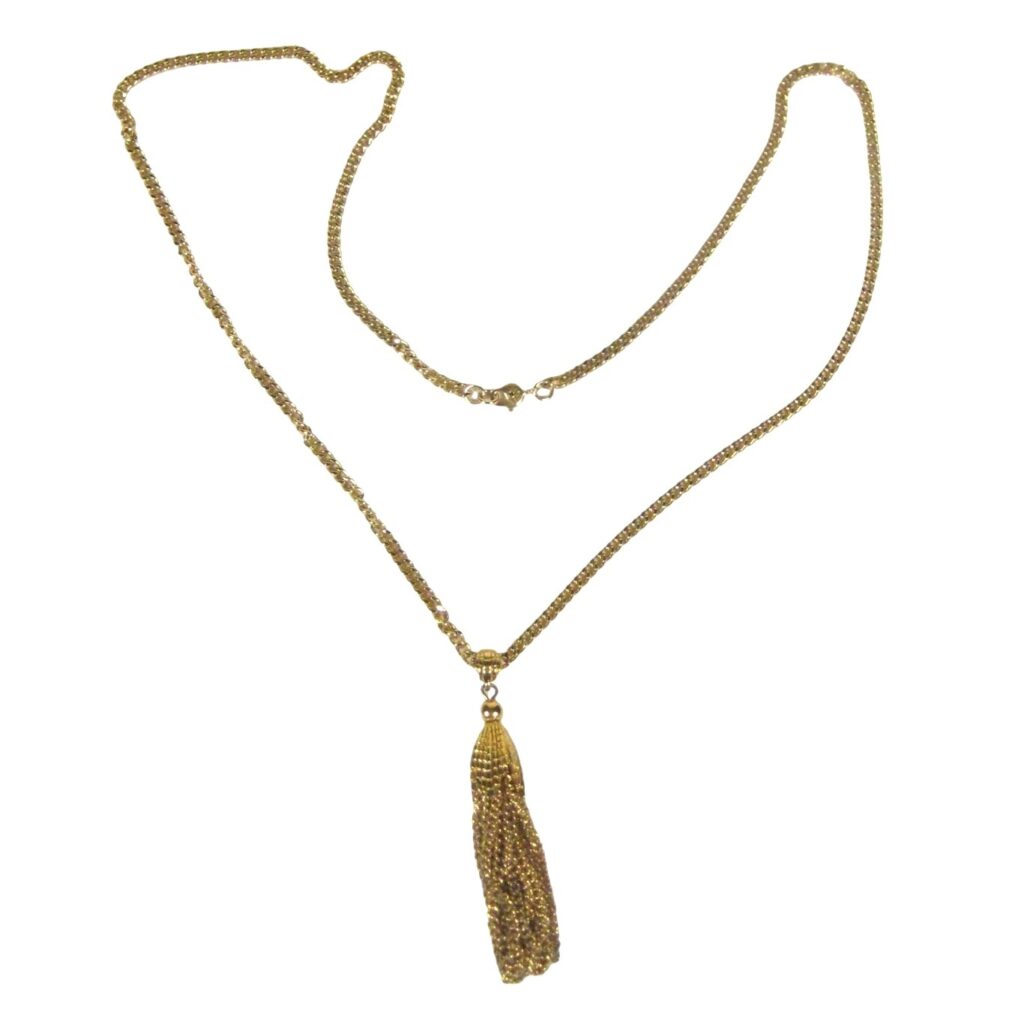A Journey Through Its History
Monet Jewelry, a name synonymous with timeless elegance and high-quality costume jewelry, has been adorning fashion enthusiasts for over eight decades. Founded in 1937 by Michael and Joseph Chernow, Monet’s journey from its inception to becoming a beloved vintage jewelry brand is a tale of innovation, artistry, and enduring style. Company started out as Monocraft in the 1920’s. They created monograms for vehicles in the roaring 1920’s. The Great Depression ended the monogramming business, changing their name in 1937 to Monet.
The Early Years: 1930s-1950s
Monet’s roots trace back to Providence, Rhode Island, the hub of America’s costume jewelry industry. The Chernow brothers initially focused on creating high-quality fashion accessories, setting Monet apart with their commitment to craftsmanship. They first created brooches and bracelets. In 1934 they hired Edmund Granville who came from Cartier. He was the only designer for Monet through the 1950s. By the 1940s, Monet had established itself as a leader in the costume jewelry market, known for its superior metalwork and innovative designs.
In the 1940’s they started a line of sterling jewelry; Marked Monet Sterling. This line used what metals were available during World War II. During this time period their brooches and fur clips became very popular. After the war they produced sterling silver jewelry items that were plated in pink or yellow gold; Vermeil technique.
During the 1950s period, Monet’s pieces were characterized by their bold, classic styles. The use of heavy gold plating, intricate engravings, and bold, geometric shapes became hallmarks of their early collections. The company’s dedication to quality ensured that each piece retained its luster and appeal for years, making vintage Monet jewelry highly sought after today.

Wonderful Monet necklace vintage from the 1950s to 1960s. Love the texture on the goldtone panels.
The Golden Era: 1960s-1980s
The 1960s marked a period of significant growth and innovation for Monet. The brand began experimenting with new materials and designs, reflecting the changing fashion trends of the era. Monet introduced a variety of styles, from elegant and understated to bold and whimsical, catering to a diverse clientele.
In 1977 Monet launched the prestigious “Ciani” line, named after the renowned Italian jewelry designer Ciani. This collection featured fine jewelry, more intricate and luxurious designs, Often incorporating semi-precious stones and elaborate detailing. Some pieces have Onyx and diamonds. It also included pieces made from 14K gold and sterling silver. The Ciani line solidified Monet’s reputation for producing high-end costume jewelry that rivaled fine jewelry in its beauty and craftsmanship. They would come with their own velvet pouches.
The 1980s was marked with the Art Deco Revival in which Monet created many pieces. Monet also started making jewelry for Yves Saint Laurent in the early 1980s.

Love this Monet goldtone necklace; Great vintage tassel pendant from 1970 to 1980.
The Modern Era: 1990s-Present
Monet continued to evolve through the 1990s and into the 21st century, adapting to modern tastes while preserving its heritage of quality and style. The brand embraced contemporary trends, offering pieces that ranged from minimalist and sleek to vibrant and bold. Despite the changing fashion landscape, Monet’s commitment to craftsmanship and attention to detail remained unwavering.
In the 1990’s Monet created jewelry for Dior. Wow!
Monet’s Signature Styles
Monet jewelry is renowned for its versatility and variety. Key signature styles include:
- Classic Elegance: Simple, timeless designs such as gold-plated hoop earrings, delicate chains, and understated bracelets that can be worn daily or for special occasions.
- Statement Pieces: Bold necklaces, chunky bracelets, and oversized earrings that add a touch of drama and sophistication to any outfit.
- Floral and Nature-Inspired Designs: Intricate brooches, pendants, and earrings featuring floral motifs, leaves, and other natural elements, often embellished with enamel and rhinestones.
- Geometric Shapes: Pieces featuring clean lines, geometric patterns, and modernist influences, reflecting the brand’s adaptability to contemporary fashion trends.
Collectibility and Legacy
Today, vintage Monet jewelry is highly collectible, cherished by enthusiasts for its enduring beauty and historical significance. Each piece tells a story of the brand’s evolution and its ability to capture the essence of different fashion eras. Collectors and fashionistas alike appreciate Monet’s ability to blend classic elegance with modern trends, ensuring its pieces remain relevant and stylish.
In conclusion, Monet Jewelry’s rich history is a testament to its dedication to quality, innovation, and timeless design. From its early days in Providence to its modern collections, Monet has consistently delivered jewelry that enhances and elevates the wearer’s style. As we look back on the brand’s journey, it’s clear that Monet’s legacy of elegance and craftsmanship will continue to shine brightly for generations to come.
Discover more about jewelry identification and where I find my jewelry for reselling on my youtube channel.
Want to learn more about identifying vintage jewelry read my article here.
Monocraft Marks
- “Monocraft” (ALL CAPs Block Print)
- Date Used: 1927 – Early 1930s
- Description: This mark was used during the early years when the company can be found on jewelry but on other items.
Monet Marks
- “Monet” (ALL CAPs Block Print)
- Date Used: 1937 – 1940s approx
- Description: The first Monet mark used on jewelry, featuring a script font.
- “Monet” (in block letters)
- Date Used: Late 1940s – 1950s
- Description: The transition to block letters marked a period of expansion and solidification of the brand.
- “Monet” (with copyright symbol © after brand)
- Date Used: 1955 – 1970s
- Description: This mark often includes a copyright symbol and signifies jewelry produced during a time when Monet solidified its reputation for high-quality costume jewelry.
- “Monet Sterling” (ALL CAPs Block Print)
- Date Used: 1940s – 1950s
- Description: This mark indicates pieces made from sterling silver, often during wartime when non-essential metal use was restricted.
- “Monet” ((with copyright symbol © before name)
- Date Used: 1970s – 1980s
- Description: This logo included a circular design around the Monet name, used during a period of modernized branding.
Additional Information
- “Monet Jewels”: Occasionally used in promotional materials and less commonly on the jewelry itself.
- “Ciani by Monet”: A high-end line introduced in the 1980s, marked with “Ciani” and sometimes “Monet” on the jewelry.
These marks provide valuable clues for dating Monet and Monocraft jewelry and understanding the brand’s evolution over time. Collectors and enthusiasts often use these marks to authenticate and date pieces, adding to their historical and monetary value
Learn more about different types of necklaces.
For those wanting to sell jewelry, I highly recommend List Perfectly as a cross-listing tool. You can list your items on up to 11 different platforms with ease. For more information, follow this link.
